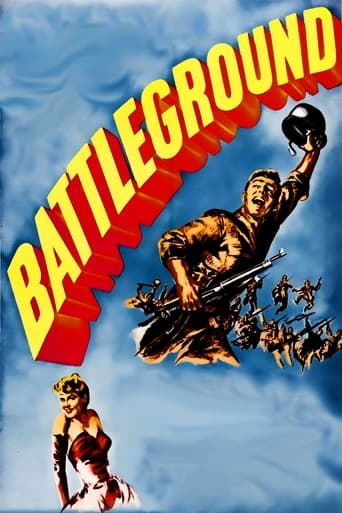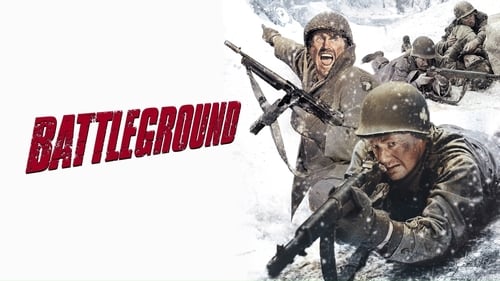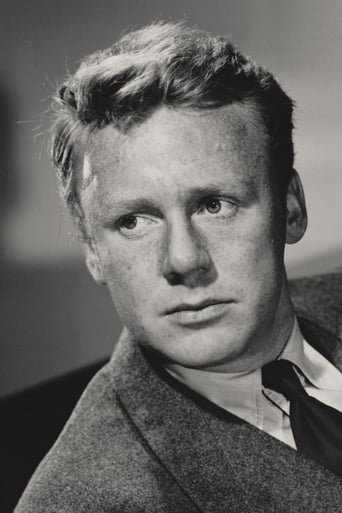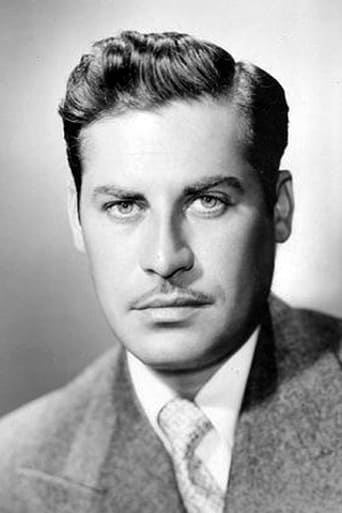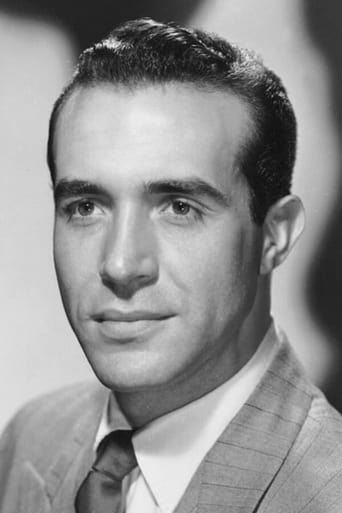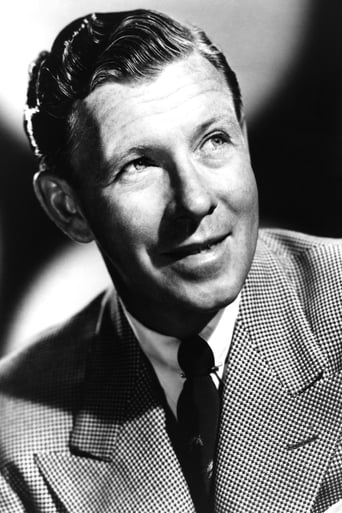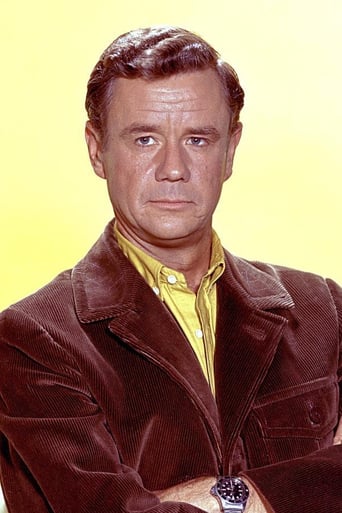Titreenp
SERIOUSLY. This is what the crap Hollywood still puts out?
Stephanie
There is, somehow, an interesting story here, as well as some good acting. There are also some good scenes
Jerrie
It's a good bad... and worth a popcorn matinée. While it's easy to lament what could have been...
DKosty123
When I was a kid this Van Johnson film was a staple of the late show movies. I remember seeing it then and even when I see it now, I am impressed with it. This one has the feel of really being near Bostogne in 1944. I think what helps it is that it was made only 5 years after the war. You get the feeling that the film crew has a bunch of vets in it and they are busy behind the scenes making it feel like the real battle.In addition to Van Johnson in one of his better roles, we have James Whitmore and Ricardo Montoban in support. All the actors seem to be perfectly cast in this one. The main weakness in it is in the late scenes where things fall into place a little too perfectly to get to the happy ended. Up until that, the film feels like a real war.Still, the marching sequence at the end of the movie is so good that it is copied in technique several times in later combat films. This one is one of the better ones and if your too young to be in the greatest generation, this is as close as you can now get to feeling what the war in Europe in WW2 was really like.
writers_reign
Several of the reviews posted here are written by people who were actually active in the Infantry and without exception they attest to its authenticity. I'm happy to take their word. One of director Wellman's main achievements is to create, on an MGM sound-stage, the feel of winter on the French-Belgian border in 1944. The cast work extremely well as an ensemble and although Van Johnson - basically the only big 'name' at the time gets both a top credit and the lion's share of screen time everyone, including Leon Ames who, as a chaplain in the last couple of reels, has probably less screen time than Ricardo Montalban, George Murphy, James Whitmore et al, pulls his weight and honours are evenly divided. A fine addition to the canon of war movies.
Spikeopath
Dedicated to the battered bastards of Bastogne, this major player in the war film genre is directed by William Wellman & tells the story of a U.S. Army division involved in what became known as the Battle of the Bulge. The terrific cast features George Murphy, John Hodiak, Ricardo Montalban, Van Johnson and James Whitmore. The film was nominated for four Academy Awards and won two: one for Robert Pirosh's bold and fluctuating screenplay and one for Paul Vogel's realism inducing black-and-white cinematography.Battleground is an important war film in many ways. Coming as it did at the tail end of the 40s, it was not required to be a flag waving morale booster for a country at war. Free of this burden, Wellman & Pirosh {an actual veteran of the Bastogne engagement}, crafted a grunts eye view of the war. Forcing us the viewers to spend the whole of the movie with one army squad {the 101st Airborne Divsion}, we get to know them, their fears & peccadilloes etc. Pirosh cleverly telling it as it was, scared men doing their duty. It's that we have been with them as their persona's have been laid bare, that makes the battle sequences even more potent. The jokes have stopped, the camaraderie and harmless rivalries replaced by men crying for their mothers or in some mud hole fighting for their lives. This snow covered, and fog shrouded part of Belgium a bleak canvas for the harshness of war {amazingly shot on the lot}. It's a stunningly structured film, one that doesn't resort to type, it subverts the many war film plot developments that are rife in genre pieces that both preceded and came post its release.The cast are uniformly strong, and all get get ample time to impact on the narrative. Something that isn't always the case with ensemble pieces. Somebody else was strong too, Producer Dore Schary, who had to fight an unconvinced Louis B. Mayer {MGM head man} to get the film made. Schary's faith in the piece was rewarded as the film became a critical darling and a box office winner. It's not hard to see why for this is a realistic and gritty look at the hardships of war and those that fought in it. Influencing many that followed it by entertaining without gusto histrionics, Battleground is still very much a template war film. 8.5/10
zardoz-13
"Battleground" depicts without a shred of either glamor or false heroics the trials and tribulations of the beleaguered 101st Airborne Division and its stubborn defense of the town of Bastogne against the onslaught of the German army during the Battle of the Bulge in 1944. "Wings" director William Wellman and scenarist Robert Pirosh--Pirosh served in the 101st Division at Bastogne—have fashioned the first wave of a new kind of war movie unlike the patriotic, flag-waving propaganda war movies made between 1942 and 1945. This gritty, realistic World War II combat film pulls few punches compared with its predecessors. The grimy G.I.s here get to grouse more about the war, the conditions, and themselves."Battleground" consists largely of campfire scenes around foxholes and eschews those familiar briefing room scenes with big battle maps and brass making points. Indeed, this movie focuses strictly the infantry. No sooner do two replacements show up in a camp somewhere in France than they find themselves in the woods carving foxholes out of the earth. Similarly, no sooner do they have those foxholes dug than they find themselves again on the march. Whereas "The Battle of the Bulge" provided a bigger (Technicolor) portrayal of this event on a grander scale, the black & white "Battleground" is content to follow the exploits of the fictional 2nd Squad, 3rd Platoon of Item Company, 327th Glider Infantry Regiment, 101st Airborne Division. Incidentally, Paul G. Vogel received an Oscar for Best Cinematography for "Battleground." William Wellman was nominated for Best Director, and "Battleground" was nominated for Best Picture, with James Whitmore getting a nomination for Best Supporting actor."Battleground" begins with two replacement G.I.s, James Layton (Marshall Thompson of "They Were Expendable") and William J. Hooper (Scotty Beckett of "The Boy from Stalingrad"), arriving at the 101st Airborne Division's camp. Layton and Beckett are friends, but they have been ordered to different companies. Layton has been assigned to I Company and Hooper to K Company. Fatefully, it is the last time that they will have a conversation because a mortar round will land in Hooper's foxhole and instantly kill him. Grimly enough, when Layton finds K Company, he learns that Hooper got killed and the explosion obliterated his dog-tags so nobody could identify him. "Battleground" contains several tragic stories like Hooper's death. Wellman and Pirosh filter the story through the consciousness of Private Layton. Layton enters the 2nd Squad as a raw, green recruit who knows nobody and gets kicked off one bunk after another after he arrives in the platoon ten. When "Battleground" concludes Layton is still the same rank, but he has learned how to smoke cigarettes, drink liquor, and use phrases like ". . . take a flying leap in a rolling dough-nut." After Layton finds himself being forced out of one bunk after another, Holly (Van Johnson of "Thirty Seconds over Tokyo") walks him, having recovered from a war wound. Later, he rises to the rank of sergeant.Meanwhile, Sergeant Kinnie (James Whitmore of "Guns of the Magnificent Seven") makes an appearance in the platoon tent, chomping on a cigar. Typically, U.S. platoons in World War II movies consist of a cross-section of regions. Ironically, no G.I. hails from Brooklyn. Riccardo Montalban makes a brief appearance as a Hispanic G.I. named Roderigues. Ironically, he dies during an artillery barrage when the Germans take a farmhouse. The wounded Roderigues takes shelter underneath a jeep, but dies in the barrage. "Gunsmoke" star Jim Arness chuckles when Sergeant Holly orders everybody to check to see if the bolts on their rifles are not frozen. Later, the Arness character dies because his bolt-action rifle has frozen up. Until the final quarter hour, "Battleground" refrains from showing the enemy getting blasted. The G.I.s wind up manning roadblocks and occupying foxholes.One link that connects "Battleground" to the patriotic World War II era films is a sermon delivered to the G.I.s by a chaplain (Leon Ames of "The Lady in the Lake") that he calls 'Was this trip necessary.' Simply, the chaplain states that the trip was necessary because the Nazis started the war. He wants them to remember the fighting and always be vigilant of any regime that called itself or what it stands for as super. Clearly, this heavy-handed message was meant not only for the memory of the Nazis but also the threat that the Soviets projected in what came to be called the Cold War. Another scene that no Bulge movie would be without is the reaction that the German's had to Brigadier General McAuliffe's response to a German offer of surrender. The filmmakers make only a passing reference to the Malmedy massacre where 150 G.I.s were executed in cold blood, but they include a couple of dramatic scenes about German troops who impersonated G.I.s as a part of Operation Grief.Interestingly, in 1951, Van Johnson reunited with writer Robert Pirosh on "Go for Broke" about Japanese-Americans fighting the Germans in the Italian campaign. However, this time Pirosh was calling the shots behind the camera as the director. Mind you, the violence in "Battleground" pales by comparison with later movies like "Saving Private Ryan" and "Rambo," but Wellman pushed the envelop in their own right. Richard Jaeckel's demise is interesting because he plays a coward who runs from combat, takes refuge in a cook's company, but is eventually summoned back to combat. He refuses to join the fight and dies when a bomb flattens the building in which he cowered. "Battleground" compares favorably to Oliver Stone's "Platoon" because both concern the baptism by fire of a green soldier. Ultimately, the outstanding strength of "Battleground" lies in its meaningful story and the variety of characters in it.
